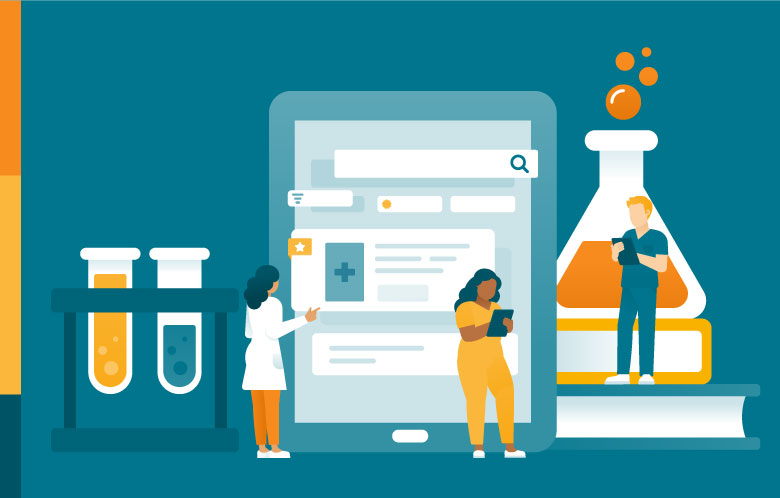The eight barriers to clinical information access can be addressed by relevant medical content and a streamlined approach in accessing content (journals, databases, eBooks, etc.). The best avenue to achieve this goal is with a medical discovery platform. Often when one thinks of a discovery platform, there is a focus on the search technology. For example, EBSCO Discovery Service (EDS) Health includes subject indexes along with relevancy ranking and full text searching to deliver relevant medical literature to end-users. But even with the most enhanced search technology and a breadth of relevant medical content available, issues around an end user’s ability to access, search, choose and use can remain persistent.
Access. Search. Choose. Use. These are the stages of a medical researcher’s journey. Users take similar journeys with PubMed, Amazon, Spotify or Google, and their experiences with the personalized dashboards, sharing options, and recommendation capabilities on these platforms have shaped their user interface expectations. It is no surprise that commercial platforms share common user interface elements. This is due in part to the four golden rules of a user interface as mentioned in this blog post and testing the user interface with a system usability scale, commonly referred to as a “SUS”.
It is imperative for medical discovery platforms to be designed utilizing a SUS. In essence, the SUS is serving as a “universal” voice of the users and providing valuable and actionable user feedback which in turn should influence every feature of the platform and UI
It is imperative for medical discovery platforms to be designed utilizing a SUS. In essence, the SUS is serving as a “universal” voice of the users and providing valuable and actionable user feedback which in turn should influence every feature of the platform and UI
The SUS is a tried and tested tool (more than thirty years in use) that has proven to be a dependable method of evaluating the usability of systems compared to industry standards. SUS includes 10 statements verified by users of your platform/system/website. Participants rank on a system of 1-5 (strongly disagree to strongly agree), and the calculations give you a score out of 100. Below are the ten statements:
- I think that I would like to use this system frequently.
- I found the system unnecessarily complex.
- I thought the system was easy to use.
- I think that I would need the support of a technical person to be able to use this system.
- I found the various functions in this system were well integrated.
- I thought there was too much inconsistency in this system.
- I would imagine that most people would learn to use this system very quickly.
- I found the system very cumbersome to use.
- I felt very confident using the system.
- I needed to learn a lot of things before I could get going with this system.
Since usability differs with usage context, background of user and other factors, SUS is a way to broadly measure usability while providing a quick and cost-effective way of “grading” the platform that is being measured. The higher the grade, the better the UI is within the system or platform.
It is imperative for medical discovery platforms to be designed utilizing a SUS. The SUS serves as a “universal” voice of users, providing valuable and actionable feedback which, in turn, should influence every feature of the platform and UI. When updating the user interface in EDS Health, EBSCO’s user research and product management teams believed it was vital to work alongside users, not just receiving their feedback, but giving them tasks to complete in the platform to see how easy or difficult the path of the task is.



